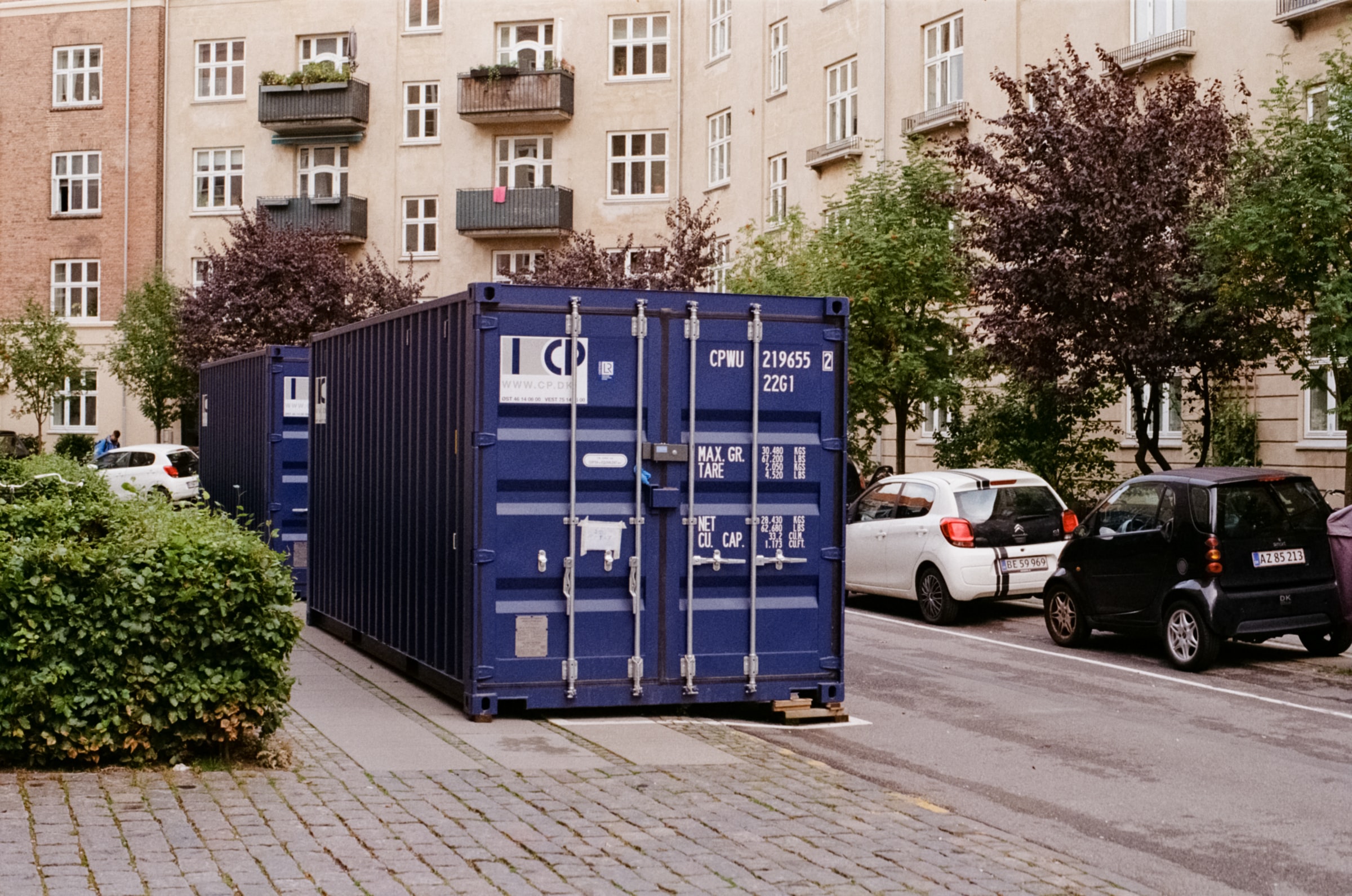Eco-Friendly Shipping Container Removal

Considering Eco-Friendly Shipping Container Removal?
In an era marked by environmental consciousness, it’s imperative that industries adopt eco-friendly shipping container removal. Shipping container removal is no exception. This blog post delves into sustainable methods for container removal, highlighting recycling, repurposing, and environmentally-friendly disposal options.
Recycling: Breathing New Life into Containers
Shipping containers, once emblematic of global trade, are now paving the way for sustainable practices through recycling. This section will provide an in-depth look into the recycling process, shedding light on how these sturdy structures are repurposed to serve new functions. Additionally, we’ll explore the wide-ranging benefits of container recycling, from waste reduction to the preservation of vital resources.
The recycling journey begins with the careful deconstruction of shipping containers. Steel panels, frames, and other components are methodically separated, setting the stage for their transformation. In this phase, containers undergo a thorough cleaning and refurbishment process. Rust, coatings, and contaminants are meticulously removed, breathing new life into the steel and preparing it for its next chapter.
Materials are sorted with precision, taking into account their quality and grade. This meticulous classification ensures that each component is directed towards its highest potential application. Repurposed materials are expertly reconstructed and modified to suit a range of purposes. Whether it’s for housing, offices, or creative installations, the adaptability of these materials knows no bounds.
Benefits of Container Recycling
By sustaining eco friendly shipping container removal, we significantly reduce the volume of waste in landfills. This eco-conscious approach minimises the environmental burden associated with container disposal. Repurposing steel and other materials from decommissioned containers conserves valuable resources. This not only reduces the demand for new materials but also lessens the environmental impact of mining and production.
The recycling process consumes considerably less energy compared to producing new steel. This leads to a reduction in greenhouse gas emissions, contributing to a more sustainable future.
Recycling shipping containers is not only an exercise in environmental responsibility, but also a testament to human ingenuity. By emphasising the repurposing of materials, we unlock new possibilities for sustainable construction and creative innovation. The benefits extend far beyond waste reduction, encompassing the conservation of resources and the reduction of our overall environmental footprint. In embracing container recycling, we take a significant step towards a more sustainable and harmonious future.
Repurposing: From Cargo to Creativity
Shipping containers, once confined to the realm of logistics, are now at the forefront of sustainable architecture and design. This section aims to showcase the boundless creativity in repurposing containers, illustrating how they can be transformed into functional and aesthetically pleasing spaces. We will explore examples ranging from homes and offices to retail spaces, all crafted from reclaimed containers. Additionally, we’ll emphasise the significant environmental advantages that accompany this innovative approach.
Repurposed Shipping Container Homes
One of the most striking examples of container repurposing is in the realm of housing. Architects and designers have leveraged the structural integrity of shipping containers to create stunning, eco-friendly homes. These homes often feature open floor plans, modern amenities, and innovative use of space. By repurposing containers for housing, we not only reduce the demand for new construction materials but also contribute to more sustainable living solutions.
Container-Based Offices
In the corporate world, shipping containers have found a new purpose as cost-effective, flexible office spaces. Businesses are now recognising the benefits of container offices, including quick setup, mobility, and the potential for customisation. By repurposing containers for office spaces, companies can reduce their environmental impact while enjoying versatile, functional workspaces.
Retail Spaces with a Green Twist
Container-based retail spaces are making waves in the retail industry. From pop-up shops to boutique stores, repurposed containers offer a unique, eye-catching storefront. These spaces can be quickly assembled and disassembled, making them ideal for temporary or seasonal retail ventures. By choosing container-based retail solutions, businesses can significantly cut down on construction waste and reduce their carbon footprint.
Environmental Benefits of Container Repurposing
Repurposing shipping containers carries a myriad of environmental benefits. By giving new life to these sturdy structures, we reduce the need for new construction materials, ultimately conserving resources. Additionally, repurposing containers diverts them from landfills, reducing waste and minimising the environmental impact of disposal. Furthermore, the energy required to repurpose a container is significantly lower than that needed to produce new building materials, contributing to a more sustainable construction process.
The versatility of shipping containers in the realm of repurposing is a testament to human creativity and innovation. From homes that blend modern design with eco-conscious living to offices and retail spaces that exemplify adaptability, the possibilities are limitless. By choosing to repurpose containers, we not only create functional and aesthetically pleasing spaces but also contribute to a more sustainable future. The environmental benefits of container repurposing are far-reaching, making it a powerful solution in the pursuit of a greener world.

Reducing Environmental Impact: Proper Disposal Methods
In our environmentally conscious era, responsible disposal of non-reusable shipping containers is paramount. This guide aims to educate readers on effective methods such as cutting, cleaning, and recycling individual components. It emphasises the importance of avoiding hazardous disposal methods to protect both our environment and public health.
Assess Reusability
Before considering disposal, it’s crucial to evaluate whether the shipping container can be repurposed or reused. Some containers, particularly those made of durable materials like steel, can often find a second life in construction or storage applications.
Separate Materials
If a shipping container is made of multiple materials (e.g., steel with wooden floors), take the time to separate them for proper recycling. This ensures that each material is processed correctly and efficiently.
Cutting and Disassembling
For shipping containers made of materials like steel, consider cutting them into smaller, manageable pieces. This step facilitates the recycling process and prevents these materials from ending up in landfills, where they may take a long time to decompose.
Cleaning for Recycling
Thoroughly cleaning shipping containers is essential to remove any residual substances, such as grease or chemical residues. This step is particularly important when dealing with industrial-grade containers to prevent contamination during the recycling process. Utilise appropriate cleaning agents and techniques for different materials.
Recycling Process for Shipping Containers
Steel Shipping Containers: Steel containers are highly recyclable and can be melted down to create new products. Ensure that any non-steel components, such as wooden floors, are removed before recycling. This ensures the steel can be processed efficiently.
Wooden Flooring: Wooden flooring in shipping containers can often be repurposed or recycled. Consider reusing it in construction projects or recycling it into wood chips or mulch.
Avoid Hazardous Disposal Methods
Under no circumstances should shipping containers be burned, as this can release harmful chemicals into the air. Similarly, avoid throwing containers into water bodies, as it can lead to pollution in aquatic environments.
Local Regulations and Programs
Familiarize yourself with local recycling programs and regulations for shipping containers. Different regions may have specific guidelines for recycling large industrial containers, and staying informed ensures that you’re following the best practices for your area.
Repurpose or Reuse
Consider repurposing or reusing shipping container components in creative ways. Steel panels, for instance, can find new life in construction or artistic projects. Wooden flooring can be used for various DIY projects or as garden material.
Responsible disposal practices for non-reusable shipping containers are crucial for a sustainable future. By understanding and implementing methods like cutting, cleaning, and recycling, we can significantly reduce the environmental impact of these large industrial containers. Let’s work together to protect our planet for generations to come.
Innovation in Container Recycling Technologies
The recycling of shipping containers has witnessed remarkable advancements, driven by a growing emphasis on sustainability and resource conservation. This exploration delves into cutting-edge technologies and processes specifically tailored for recycling shipping containers, including automated disassembly, advanced material recovery, and eco-friendly coatings.
Automated Disassembly Techniques
A significant stride in shipping container recycling is the introduction of automated disassembly techniques. These technologies leverage robotics, hydraulic systems, and precision tools to systematically deconstruct containers. Automated processes can efficiently remove fasteners, separate panels, and dismantle structural elements, ensuring that materials are extracted with minimal waste and damage.
By employing automated disassembly, recycling facilities can significantly enhance the speed and precision of the recycling process, leading to higher recovery rates of valuable materials.
Material Recovery from Steel
Advanced technologies for material recovery from steel are at the forefront of container recycling. Innovations such as magnetic separation systems and induction-based metal sorting enable efficient extraction of ferrous and non-ferrous metals from container components. These technologies not only improve material purity but also increase the overall recyclability of steel.
Material recovery from steel ensures that this valuable resource is reclaimed and reused, reducing the demand for new steel production and its associated environmental impact.
Eco-Friendly Coatings and Surface Treatments
Innovations in eco-friendly coatings and surface treatments are transforming the recyclability of shipping containers. Researchers and manufacturers are developing coatings that are easily separable during the recycling process, ensuring they do not impede the recovery of steel.
These coatings are engineered to break down or detach under specific conditions, allowing containers to be recycled without compromising the quality of the recovered steel. By reducing contamination from non-recyclable coatings, these advancements contribute to higher-quality recycled steel products.
Modular Construction Techniques
Emerging trends in modular construction are creating new opportunities for repurposing shipping container components. Advanced welding and fabrication technologies enable the transformation of salvaged steel from shipping containers into structural elements for construction projects.
By repurposing steel from decommissioned shipping containers, these techniques contribute to sustainable construction practices and reduce the environmental footprint associated with traditional building materials.
Innovations in shipping container recycling technologies are revolutionising the way we approach sustainable waste management. Automated disassembly, advanced material recovery from steel, eco-friendly coatings, and modular construction techniques are driving the industry towards higher efficiency and greater sustainability. These cutting-edge advancements hold the potential to significantly enhance the effectiveness of shipping container recycling, ushering in a more sustainable and environmentally conscious future.
Eco friendly shipping container removal
By adopting eco friendly shipping container removal, we not only contribute to a healthier environment but also set a standard for sustainable business operations. Whether through recycling, repurposing, or responsible disposal, the possibilities for minimising our environmental footprint are boundless. Embracing these practices not only benefits our planet but also fosters a more conscious and responsible industry.

One Comment